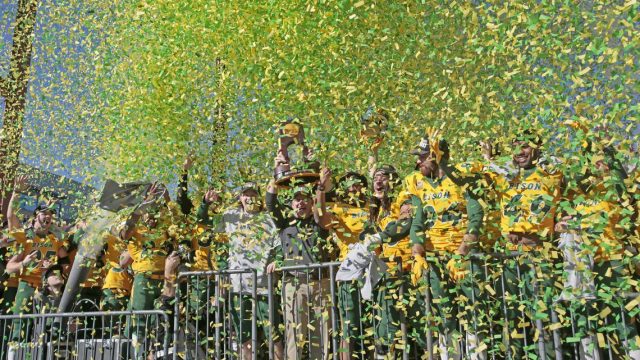Football Championships Have Not Helped North Dakota State University’s Enrollment

Earlier this week I wrote about the supposed “business” of athletics at North Dakota State University.
The school is host to a fantastically successful football program which has won seven Division I FCS championships dating back to 2011. Yet, despite all of that success, the athletics programs at the school are propped up by millions of dollars in subsidies paid by taxpayers and students. The existence of the various sports programs on the NDSU campus makes the cost of operating and attending NDSU more expensive for both students and the State of North Dakota.
I’ve been making this argument for years, both about NDSU and collegiate athletics in general, and the response I typically get from supporters of the status quo is that the added expense is worth it. Successful athletic programs raise the profile of the institutions they’re associated with.
It’s marketing, in other words. Here’s a representative response to my argument from Twitter:
GO BISON!!
GO SIOUX!! (Oops, “Hawks”)
Successful Athletics is Marketing 101. pic.twitter.com/K7uqao7JAw— Tim Graveline (@youriROI) August 27, 2019
A lot of people assume that a healthy and successful athletics department is a boon to the school it’s attached to, but is that really true?
Financially, as I’ve already demonstrated, the NDSU athletics programs (and, indeed, most collegiate athletic programs) are a financial drag on their schools. They do not bring in money the schools can use to enhance their academic missions. Rather, they drain money from those initiatives.
But do the sports programs help with student recruitment?
It’s hard to imagine a sports program being much more successful than NDSU’s football team has been since 2011, yet today my colleague April Baumgarten reported that NDSU’s enrollment is down sharply this fall and has fallen to its lowest point in more than a decade.
As you can see from this chart, which I created from enrollment reports produced by both NDSU and the University of North Dakota, since 2011 when NDSU won the first in its latest string of football championships, enrollment at NDSU is down nearly 9 percent:
At this point NDSU boosters will say something along the lines of “imagine what enrollment would have been if it weren’t for the football championships.”
I’m not sure we have to imagine that. We can look at enrollment at the University of North Dakota (they just released their 2019 fall enrollment numbers this morning). That school’s highest profile sports program, the hockey team, has won just one championship since 2011. Yet during that time their enrollment trend has been almost identical to NDSU’s, declining just over 9 percent since 2011.
NDSU’s football team has won far more championships, and earned far more media attention, than UND’s hockey team. And yet the impact of those championships (or lack of championships) doesn’t show up in enrollment trends.
Both schools have been trending down for about a decade now. Meaning, at best, the millions spent subsidizing athletics on campus has accomplished pretty much nothing in terms of bolstering enrollment.
Again, athletics programs are (with a few rare exceptions) a financial drain on the campuses they’re attached to. Nor is there any evidence, at least here in North Dakota, that they’re an effective way to attract students.
If the only point of these athletic programs is to entertain the masses, if there’s no measurable benefit of the programs to the schools which host them, then can we really justify allowing those programs to inflate the cost of higher education?
This year NDSU students will spend nearly $1.4 million on subsidizing athletic programs at their school, and taxpayers will kick in almost $6.4 million more, which works out to a total of more than $591 per student.
Why is that ok?





